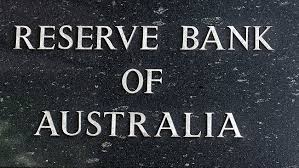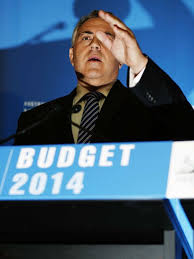The Ridiculous Debt and Deficit Scam

 After a weekend
After a weekendof intense study reading a plethora of material online from a variety
of economists I am at the point where, similar to my University days, I
must put what I have learned to paper. In reality it’s even scarier than
University because, unlike handing it to a tutor for a confidential and
sympathetic grading, posting it online exposes me to any amount of
ridicule from anyone, anywhere. But, having come this far, I have to
press on and continue what I started with my previous article, “Do Taxes
Fund Spending?”
If what I write is true, and naturally I believe it is, we as a
nation are being deceived in a way that, I think, is unconscionable.
Essentially, this is a dummies version of the previous article and is
designed to attract more people like me, who are still going through the
difficult process of learning and understanding what is a relatively
simple principal So, here goes….
*
To a sovereign nation like ours that operates its own central bank, the
notion of a government being in debt and budgeting for surpluses and
deficits is a ridiculous scam.
Every sovereign nation has the right and the responsibility of
creating its own money. It carries out this responsibility by creating
and supplying that money through the agency of its central bank and
delivers that money into the market place via the commercial banking
system. This is just one source from which commercial banks obtain
money, but it is the most important source because it fulfills one of
the essential steps a government takes to control the supply of money.
Other sources are private investment and export income.
 The
Theother essential steps a government takes to control the supply of money
are through taxation and the sale of bonds. Taxation and the sale of
bonds remove money from the market place. There are two other ways money
is removed from the market place, namely through personal savings and
import payments. This two pronged process is analogous to a giant water
tank with a hose at the top pouring water in and an outlet valve at the
bottom allowing water out. Now think money instead of water. The
objective is to maintain as close as possible a constant level of money
in our economy; enough money in circulation sufficient to avoid
inflation which is what happens when there is too much money in
circulation and recession when there is too little. It is a finely
balanced discipline undertaken and monitored by the central bank. The
amount of money in circulation at any time is called the monetary base
or high-powered money. It is the national income and consists of all the
money the central bank holds in reserves for the commercial banks as
well as all the money in the commercial bank vaults, and all the money
you and I have in our wallets and purses and what we hide under the
carpet. Just how the central bank calculates all that is another story,
but they do it constantly. The process never stops.
 Governments
Governmentsrely heavily on the efficiency of the central bank to keep them advised
as to the amount of money in circulation, as well as the likely
movement of money both in the short term and the long term. The central
bank also advises the government on the implications of government
fiscal decisions and the impact of those decisions upon that finely
balanced position they are required to monitor. It goes without saying
that sometimes the central bank miscalculates the current position
and/or governments ignore warnings given by the bank which can, and
does, lead to imbalances that cause inflationary pressures or
recessionary outcomes. Nobody is perfect all the time. So, when things
get out of hand and too much money gets into the system, the central
bank will generally address this imbalance by raising interest rates to
soak up and remove that money. The government may also choose to issue
bonds. When too little money is in circulation and people stop buying
other than for essential needs, more money needs to be poured into the
economy to stimulate demand. In this case the central bank will lower
interest rates to release money into circulation thus enabling increased
spending power. All this activity is made possible because the
government has the ability and responsibility to create money.
This brings us to the question of government budgets and the notion
of surplus, deficit and debt. When a government brings down a budget it
will do so to with the intention of matching what it spends with what it
collects in the form of taxation. It does this to ensure a predictable
outflow of money from circulation and to maintain that constant balance;
not unlike how we manage our household affairs. But it is wrong to
think that it must do this. It doesn’t. Managing a sovereign nation’s
economy is not the same as managing a household economy. Households
cannot create their own money. We all wish we could but our resources
are finite. A government’s resources are not finite despite what
politicians tell us. To understand this, let’s go back to the water tank
analogy. The government creates money and pours it in, taxation takes
money out. Taxation doesn’t fund spending. It is part of the process
that removes the money from circulation in a constant predictable way.
So, when a government’s budget reveals that it is spending more than it
is collecting (i.e. a deficit), that doesn’t mean it has to borrow to
make up the difference. It can just create more money, i.e. print it,
although these days the process is little more than altering the numbers
in a computer. So long as the level in the tank remains constant that
extra money is not a debt. It doesn’t have to be paid back. Likewise
when a budget shows less money being spent than is being collected in
tax (i.e. a surplus), that doesn’t mean the government has a bank
account with that surplus saved. That money simply doesn’t exist.
 If
Ifwe apply this principle to our present government’s rhetoric about debt
and deficit, about unsustainable spending, about the “mess” the
previous government left, one can clearly see that such claims are false
and misleading. This government is trying to manage the economy in the
same way each of us manages our own households. The figures they present
to us are a fiction. Households and businesses manage their affairs
differently because they cannot print money. It would be nice if we
could but there you are. We must determine our profit and loss and our
tax liabilities with resources that are finite. We must live within the
confines of our own budgets and meet our obligations as determined by
the government. But that is not the way a government should run a
country.
This principle also exposes Joe Hockey’s budget as not only cruel and
vindictive but also as a ridiculous sham. It smacks of something
personal as if the poor are being punished for allowing themselves to be
in that situation. It exposes the neo-Liberal economic strategy that
treats Australia as if it were a household. They should be challenged
for this. This government is not governing for the people but for the
big end of town. It is blatantly unfair and unnecessary.
I am not pretending to be an economist. But I am smart enough to see
the difference between the government’s management of the economy and
the way it should be managed. Either they don’t know how to do it, or
they don’t want to, which is the more likely, and that means we, the 90%
who feed the economy, are being played for fools by the 10% who feed
off us and stay rich, because of us.
Recent articles by John Kelly:
Hockey’s Class Warfare
What a Circus!
Is Abbott a Christian or just a Catholic?
Where have all the Leaders gone?

No comments:
Post a Comment